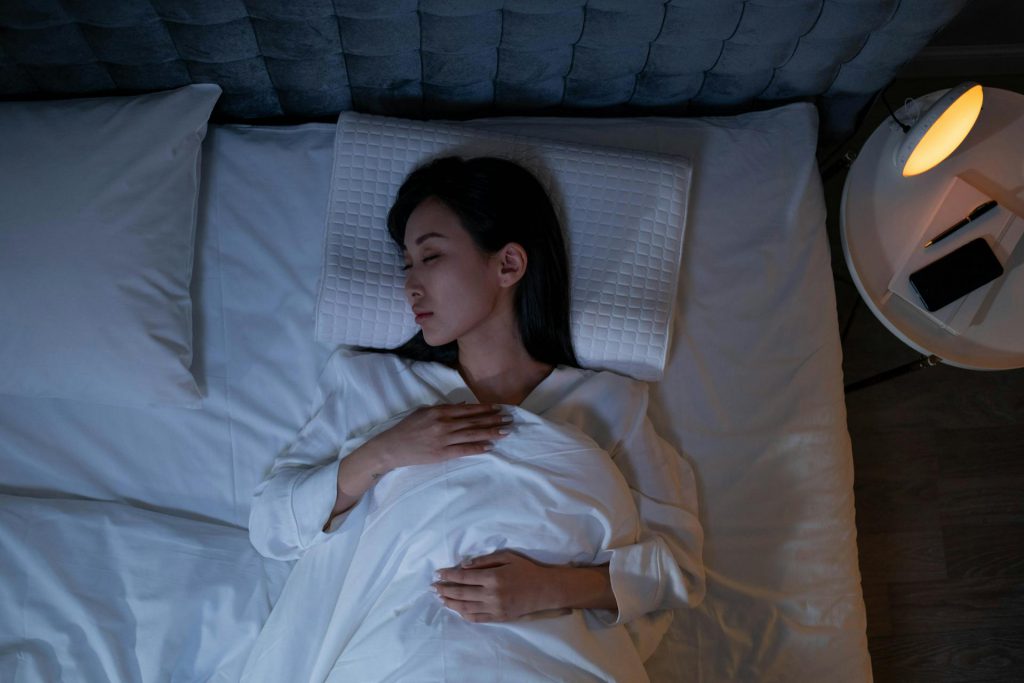Anxiety Counseling
Anxiety counseling provides a therapeutic space for individuals grappling with excessive worry, fear, and related emotional distress. It’s a specialized form of psychotherapy designed to address the root causes of anxiety, develop effective coping mechanisms, and promote long-term emotional well-being. Unlike simply managing symptoms, anxiety counseling aims to empower individuals to regain control over their lives.
A core component of anxiety counseling is the establishment of a strong therapeutic alliance. This relationship provides a safe and non-judgmental environment where clients can openly explore their anxieties. Counselors employ various evidence-based techniques, tailored to the individual’s specific needs and anxiety disorder. Cognitive-behavioral therapy (CBT) is a widely used approach, focusing on identifying and modifying negative thought patterns and behaviors that contribute to anxiety.
Time to feel better. Find a mental, physical health expert that works for you.
CBT helps clients recognize the connection between their thoughts, feelings, and behaviors. By challenging distorted thinking, clients can develop more realistic and balanced perspectives. Exposure therapy, a component of CBT, gradually exposes individuals to feared situations or objects, allowing them to build tolerance and reduce avoidance behaviors.
Beyond CBT, other therapeutic approaches, such as acceptance and commitment therapy (ACT) and dialectical behavior therapy (DBT), are also utilized. ACT emphasizes acceptance of anxious thoughts and feelings, while DBT focuses on developing skills to manage intense emotions and improve interpersonal relationships. These therapies equip individuals with practical tools to navigate anxiety-provoking situations and build resilience.
Anxiety counseling also addresses the underlying factors that contribute to anxiety, such as past trauma, unresolved conflicts, or relationship difficulties. Counselors may use psychodynamic therapy to explore these deeper issues, fostering self-awareness and promoting emotional healing.
Furthermore, anxiety counseling recognizes the importance of lifestyle factors in managing anxiety. Counselors may provide guidance on stress management techniques, such as mindfulness meditation, relaxation exercises, and healthy lifestyle habits. They may also collaborate with other healthcare professionals to address any co-occurring physical or mental health conditions.
The goal of anxiety counseling is not to eliminate anxiety altogether, as some anxiety is a normal part of life. Instead, it aims to help individuals develop a healthy relationship with anxiety, learn to manage its intensity, and prevent it from interfering with their daily lives. Through a combination of therapeutic techniques, education, and support, anxiety counseling empowers individuals to live fulfilling and meaningful lives, free from the debilitating effects of excessive worry and fear.
What is an Anxiety Disorder?
An anxiety disorder is a mental health condition characterized by persistent, excessive fear or worry that significantly interferes with daily life. It’s more than just occasional nervousness; it’s a chronic pattern of distress that can manifest in various forms, each with unique symptoms and triggers. These disorders disrupt a person’s ability to function normally, impacting their relationships, work, and overall well-being.
Unlike normal anxiety, which is a natural response to stress, anxiety disorders involve intense and irrational fears that are often disproportionate to the actual threat. Individuals with these disorders frequently experience physical symptoms, such as rapid heartbeat, sweating, trembling, and shortness of breath. These physical manifestations can further exacerbate the psychological distress, creating a cycle of fear and avoidance.
Several distinct types of anxiety disorders exist. Generalized anxiety disorder (GAD) is characterized by persistent and excessive worry about various aspects of life, such as work, health, or finances. Panic disorder involves recurrent, unexpected panic attacks, which are sudden episodes of intense fear accompanied by physical symptoms. Social anxiety disorder (SAD) involves intense fear of social situations, leading to avoidance of social interactions. Specific phobias involve intense fear of specific objects or situations, such as spiders, heights, or public speaking.
Obsessive-compulsive disorder (OCD), while previously classified as an anxiety disorder, is now categorized separately, but shares similar characteristics. It involves intrusive, unwanted thoughts (obsessions) and repetitive behaviors (compulsions) performed to reduce anxiety. Post-traumatic stress disorder (PTSD) develops after experiencing or witnessing a traumatic event and involves intrusive memories, flashbacks, and hypervigilance.
The causes of anxiety disorders are complex and multifaceted. Genetic predispositions, brain chemistry imbalances, environmental factors, and life experiences can all contribute to their development. For instance, a family history of anxiety disorders can increase an individual’s vulnerability. Traumatic events, such as abuse or neglect, can also trigger the onset of anxiety disorders.
Recognizing the signs and symptoms of anxiety disorders is crucial for early intervention and treatment. Left untreated, these disorders can significantly impair a person’s quality of life and lead to other mental
health problems. Effective treatments, such as cognitive-behavioral therapy (CBT), medication, and lifestyle changes, can help individuals manage their symptoms and regain control over their lives. Seeking professional help is essential for accurate diagnosis and personalized treatment planning.
Anxiety Disorder Symptoms
Anxiety disorders present a wide array of symptoms that can significantly impact an individual’s daily life. These symptoms manifest both physically and psychologically, often creating a cycle of distress and avoidance. Recognizing these signs is crucial for early intervention and effective treatment.
Psychological Symptoms:
One of the hallmark symptoms of anxiety disorders is persistent and excessive worry. This worry is often disproportionate to the actual threat and can be difficult to control. Individuals may experience racing thoughts, difficulty concentrating, and a constant sense of dread. Irritability, restlessness, and a feeling of being on edge are also common.
Panic attacks, a hallmark of panic disorder, involve sudden episodes of intense fear accompanied by physical symptoms. These attacks can be terrifying, with individuals feeling like they are losing control, having a heart attack, or dying. Social anxiety disorder is characterized by intense fear of social situations, leading to avoidance of social interactions and significant distress in social settings. Specific phobias involve intense, irrational fears of specific objects or situations, leading to avoidance behaviors.
Obsessive-compulsive disorder (OCD) presents with intrusive, unwanted thoughts (obsessions) that cause significant anxiety. Individuals engage in repetitive behaviors (compulsions) to reduce this anxiety, often creating a cycle of distress. Post-traumatic stress disorder (PTSD) involves intrusive memories, flashbacks, and nightmares related to a traumatic event. Hypervigilance, emotional numbness, and avoidance of triggers are also common.
Physical Symptoms:
Anxiety disorders often manifest with physical symptoms that can be distressing. Rapid heartbeat, palpitations, and chest tightness are common, mimicking heart attack symptoms. Shortness of breath, hyperventilation, and dizziness can also occur. Trembling, sweating, and muscle tension are frequent physical manifestations of anxiety.
Gastrointestinal problems, such as nausea, stomach aches, and diarrhea, are also common, as the gut is highly sensitive to stress. Headaches, fatigue, and sleep disturbances, including insomnia or restless sleep, can further compound the distress.
Behavioral Symptoms:
Anxiety disorders often lead to avoidance behaviors. Individuals may avoid situations, places, or people that trigger their anxiety. This avoidance can limit their daily activities and social interactions. Procrastination and difficulty completing tasks are also common, as anxiety can impair concentration and motivation.
Individuals may also engage in safety behaviors, such as seeking reassurance, checking things repeatedly, or carrying protective items, to reduce their anxiety. These behaviors can reinforce the anxiety cycle and prevent individuals from confronting their fears.
The severity and frequency of these symptoms can vary depending on the type of anxiety disorder and individual factors. Early recognition and seeking professional help are essential for managing these symptoms and improving quality of life.
Connect Free. Improve your mental and physical health with a professional near you

There are different types of anxiety disorders
Anxiety disorders, while sharing core features of excessive fear and worry, manifest in distinct forms, each with unique symptoms and triggers. Recognizing these variations is crucial for accurate diagnosis and tailored treatment. Here’s an overview of several prominent anxiety disorders:
Generalized Anxiety Disorder (GAD): GAD is characterized by persistent, excessive worry about various aspects of life, such as work, health, or social situations. Individuals with GAD often experience restlessness, fatigue, difficulty concentrating, irritability, muscle tension, and sleep disturbances. Their worry is often difficult to control and disproportionate to the actual threat.
Panic Disorder: Panic disorder involves recurrent, unexpected panic attacks, which are sudden episodes of intense fear accompanied by physical symptoms like rapid heartbeat, chest pain, shortness of breath, dizziness, and trembling. Individuals may develop anticipatory anxiety, fearing future attacks, and avoid situations that they believe might trigger them.
Social Anxiety Disorder (SAD): SAD, also known as social phobia, is characterized by intense fear of social situations where individuals might be scrutinized or judged by others. This fear can lead to avoidance of social interactions, impacting relationships, work, and social activities. Individuals with SAD may experience physical symptoms like blushing, sweating, and trembling in social settings.
Specific Phobias: Specific phobias involve intense, irrational fears of specific objects or situations, such as spiders, heights, flying, or public speaking. Exposure to the phobic stimulus triggers significant anxiety, leading to avoidance behaviors that can significantly limit daily life.
Separation Anxiety Disorder: While often associated with childhood, separation anxiety disorder can affect adults as well. It involves excessive fear or anxiety related to separation from attachment figures or home. Individuals may experience distress when anticipating or experiencing separation, leading to avoidance of situations that might trigger it.
Agoraphobia: Agoraphobia is characterized by intense fear or anxiety about being in places or situations where escape might be difficult or help might not be available in the event of a panic attack or other distressing symptoms. This often leads to avoidance of public transportation, open spaces, enclosed spaces, crowds, or being outside the home alone.
Selective Mutism: Selective mutism is characterized by a consistent failure to speak in specific social situations where there is an expectation for speaking, despite speaking in other situations. It most often affects children, but can also persist into adulthood.
Understanding these different types of anxiety disorders is essential for providing appropriate support and treatment. Each disorder requires a tailored approach, often involving a combination of therapy, medication, and lifestyle changes. Early diagnosis and intervention can significantly improve outcomes and enhance the quality of life for individuals struggling with anxiety.
Complementary Treatments
Complementary treatments, often used alongside traditional medical approaches, offer a holistic approach to managing various health conditions, including mental health disorders like anxiety and depression. These treatments focus on addressing the mind-body connection, promoting relaxation, and enhancing overall well-being. While they may not replace conventional medical care, they can play a valuable role in supporting healing and improving quality of life.
Mindfulness and meditation practices are increasingly recognized for their ability to reduce stress and anxiety. Mindfulness involves paying attention to the present moment without judgment, fostering a sense of calm and awareness. Regular meditation can help individuals regulate their emotions, improve focus, and reduce rumination, a common symptom of anxiety and depression.
Yoga and tai chi, ancient practices combining physical postures, breathing techniques, and meditation, offer numerous benefits for both physical and mental health. These practices promote relaxation, reduce muscle tension, and improve flexibility and balance. They can also help individuals connect with their bodies and cultivate a sense of inner peace.
Acupuncture, a traditional Chinese medicine technique involving the insertion of thin needles into specific points on the body, is believed to stimulate the body’s natural healing abilities. It has shown promise in reducing anxiety and depression symptoms by influencing neurotransmitter levels and promoting relaxation.
Herbal remedies, such as chamomile, lavender, and valerian root, have been used for centuries to promote relaxation and improve sleep. While more research is needed to fully understand their efficacy, some studies suggest that these herbs may have mild calming effects. However, it’s crucial to consult with a healthcare professional before using herbal remedies, as they can interact with medications.
Art therapy and music therapy provide creative outlets for emotional expression and healing. Engaging in artistic activities, such as painting, drawing, or playing music, can help individuals process emotions, reduce stress, and enhance self-awareness. Music therapy, in particular, can be beneficial for reducing anxiety and promoting relaxation.
Massage therapy can also be a valuable complementary treatment for anxiety and stress. It promotes relaxation, reduces muscle tension, and improves circulation. The physical touch and calming environment can contribute to a sense of well-being.
It’s essential to remember that complementary treatments should be used in conjunction with, not as a replacement for, conventional medical care. Individuals should always consult with their healthcare provider before starting any new treatment, especially if they are taking medications or have underlying health conditions. By integrating these holistic approaches into a comprehensive treatment plan, individuals can enhance their overall well-being and support their journey towards healing.
Find Help for an Anxiety Disorder
Finding help for an anxiety disorder is a crucial step towards reclaiming control and improving quality of life. The journey can seem daunting, but numerous resources and treatment options are available. Early intervention is key, as untreated anxiety disorders can worsen over time and lead to other mental health challenges.
Seeking Professional Evaluation:
The first step is to seek a professional evaluation from a qualified mental health professional. This could be a psychiatrist, psychologist, or licensed therapist. They can conduct a thorough assessment to determine the specific type of anxiety disorder and develop a personalized treatment plan. A primary care physician can also be a good starting point, providing referrals to mental health specialists.
Therapeutic Approaches:
Cognitive-behavioral therapy (CBT) is a widely recognized and effective treatment for anxiety disorders. CBT helps individuals identify and change negative thought patterns and behaviors that contribute to anxiety. Exposure therapy, a component of CBT, gradually exposes individuals to feared situations or objects, helping them build tolerance and reduce avoidance.
Other therapeutic approaches, such as acceptance and commitment therapy (ACT) and dialectical behavior therapy (DBT), can also be beneficial. ACT emphasizes acceptance of anxious thoughts and feelings, while DBT focuses on developing skills to manage intense emotions and improve interpersonal relationships.
Medication Options:
In some cases, medication may be prescribed to manage anxiety symptoms. Antidepressants, such as selective serotonin reuptake inhibitors (SSRIs) and serotonin-norepinephrine reuptake inhibitors (SNRIs), are commonly used to treat anxiety disorders. Anti-anxiety medications, such as benzodiazepines, may be prescribed for short-term relief, but they can be habit-forming and are not typically recommended for long-term use.
Support Groups and Online Resources:
Support groups provide a valuable source of peer support and shared experience. Connecting with others who understand the challenges of anxiety can reduce feelings of isolation and provide encouragement. Numerous online resources, including websites and forums, offer information, support, and coping strategies.
Lifestyle Changes:
Lifestyle changes can also play a significant role in managing anxiety. Regular exercise, a balanced diet, and sufficient sleep can improve overall well-being and reduce anxiety symptoms. Stress management techniques, such as mindfulness meditation, yoga, and deep breathing exercises, can help individuals regulate their emotions and promote relaxation.
Finding the Right Therapist:
Finding a therapist who is a good fit is crucial for successful treatment. Look for a therapist who is experienced in treating anxiety disorders and with whom you feel comfortable and safe. Consider factors such as their credentials, experience, and therapeutic approach.
Don’t Hesitate to Seek Help:
Anxiety disorders are treatable. Don’t hesitate to seek help if you are struggling. With the right support and treatment, you can learn to manage your symptoms and live a fulfilling life.

Free consultations. Connect free with local health professionals near you.
Conclusion
Concluding a discussion on anxiety disorders necessitates a message of hope grounded in realistic expectations. While anxiety can be a debilitating condition, it’s crucial to emphasize that effective treatments and coping strategies exist, enabling individuals to reclaim their lives. It’s not about eradicating anxiety entirely, but rather about learning to manage it, reducing its impact, and fostering resilience.
Firstly, it’s vital to reiterate the prevalence and complexity of anxiety disorders. These are not mere feelings of nervousness, but rather serious mental health conditions that require professional attention. Acknowledging their impact and validating the experiences of those who struggle is essential for reducing stigma and encouraging help-seeking behavior.
Secondly, the conclusion must highlight the diverse range of effective treatments available. Cognitive-behavioral therapy (CBT), medication, and complementary therapies, when used appropriately, can significantly alleviate symptoms and improve quality of life. Emphasizing the importance of individualized treatment plans, tailored to the specific needs of each person, is crucial. One size does not fit all.
Thirdly, the role of lifestyle changes in managing anxiety should not be underestimated. Regular exercise, a balanced diet, adequate sleep, and stress-reduction techniques like mindfulness and meditation can significantly contribute to overall well-being. These practices empower individuals to take an active role in their recovery.
Furthermore, the importance of building a strong support network cannot be overstated. Family, friends, and support groups can provide invaluable emotional support and practical assistance. Sharing experiences and connecting with others who understand the challenges of anxiety can reduce feelings of isolation and foster a sense of community.
The conclusion should also address the ongoing nature of managing anxiety. Recovery is not a linear process, and setbacks may occur. However, these setbacks should be viewed as learning opportunities, not as failures. Developing coping mechanisms, building resilience, and maintaining a commitment to self-care are essential for long-term well-being.
Finally, the message must be one of hope and empowerment. Anxiety disorders, while challenging, are treatable. With the right support and treatment, individuals can learn to manage their symptoms, build fulfilling lives, and thrive. By promoting awareness, reducing stigma, and advocating for accessible mental health services, we can create a society that supports individuals struggling with anxiety and empowers them to live their best lives.
Time to feel better. Find a mental, physical health expert that works for you.
Common FAQs
General Understanding
What is anxiety counseling, and how is it different from just managing symptoms?
What techniques are used in anxiety counseling?
- Counselors use various evidence-based techniques, including:
- Cognitive-behavioral therapy (CBT): Focuses on identifying and changing negative thought patterns and behaviors.
- Exposure therapy: Gradually exposes individuals to feared situations to build tolerance.
- Acceptance and commitment therapy (ACT): Emphasizes acceptance of anxious thoughts and feelings.
- Dialectical behavior therapy (DBT): Focuses on managing intense emotions and improving interpersonal relationships.
- Psychodynamic therapy: explores deeper issues such as past trauma.
Can anxiety counseling cure my anxiety?
Common FAQs
Anxiety Disorder FAQs
What is an anxiety disorder?
What are the different types of anxiety disorders?
-
- Common types include:
- Generalized anxiety disorder (GAD)
- Panic disorder
- Social anxiety disorder (SAD)
- Specific phobias
- Obsessive-compulsive disorder (OCD)
- Post-traumatic stress disorder (PTSD)
- Separation anxiety disorder
- Agoraphobia
What are the symptoms of an anxiety disorder?
- Symptoms vary but can include:
- Persistent worry
- Panic attacks
- Social avoidance
- Physical symptoms like rapid heartbeat, sweating, and trembling
- Obsessive thoughts and compulsive behaviors.
- Flashbacks and hypervigilance.
What causes anxiety disorders?
- Causes are complex and multifaceted, including:
- Genetic predispositions
- Brain chemistry imbalances
- Environmental factors
- Life experiences, such as trauma
Common FAQs
Finding Help and Treatment FAQs
How do I find help for an anxiety disorder?
Start by seeking a professional evaluation from a mental health professional. Treatment options include therapy (like CBT), medication, and lifestyle changes.
What complementary treatments can help with anxiety?
- Complementary treatments can include:
- Mindfulness and meditation
- Yoga and tai chi
- Acupuncture
- Herbal remedies
- Art and music therapy
- Massage therapy.
Is medication necessary for anxiety disorders?
People also ask
Q: What is the 3-3-3 rule of anxiety?
Q:Is anxiety a disability?
Q:What is a natural anxiety pill?
Q:What are the 4 C's of anxiety?
NOTICE TO USERS
MindBodyToday is not intended to be a substitute for professional advice, diagnosis, medical treatment, or therapy. Always seek the advice of your physician or qualified mental health provider with any questions you may have regarding any mental health symptom or medical condition. Never disregard professional psychological or medical advice nor delay in seeking professional advice or treatment because of something you have read on MindBodyToday.
Share this article

Let us know about your needs

Quickly reach the right healthcare Pro

Message health care pros and get the help you need.
Popular Healthcare Professionals Near You
You might also like
What is Suicide Therapy?
, What is Suicide Therapy ? Everything you need to know Find a Pro Suicide Therapy Suicidal ideation and attempts […]
What is Sex Therapy?
, What is Sex Therapy ? Everything you need to know Find a Pro Sex Therapy Sex therapy is a […]
What is Sleep Disorder Therapy?
, What is Sleep Disorder Therapy ? Everything you need to know Find a Pro Sleep Disorder Therapy Sleep disorders […]





